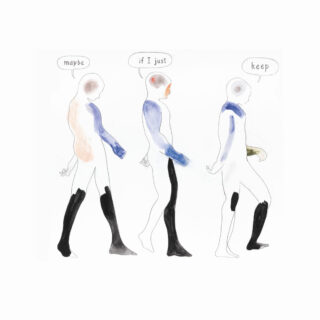Félicia Atkinson
Image Language
8/10

8/10
So much of the music Félicia Atkinson has made can feel like very deliberate sonic translations of other art forms. Listening to an album can feel like observing a vast minimalist painting; from a distance, it looks to be made of only one or two colours, but the closer you get, the busier each tiny detail is, the coarser the dried markings feel to touch. This is why the ‘ambient’ marker has never suited the French musician; the layers of activity, primarily in the interplay of her dense instrumentation and her creepy, whispering spoken word, confound the differences between sound and silence.
However, Image Language opens with the near-orchestral sweep of ‘La Brume’, its oddly sexy sax snaking its way through a mist of drones. An ongoing theme in Atkinson’s work is thresholds, spaces where concepts meet and depart – to that end, the crackling ambience of ‘Les Dunes’ and ‘Becoming A Stone’ tread somewhere between comfort and horror. The ever-present former is here in Atkinson’s murmured speech, but the latter aspect of her work feels especially heightened. This feels particularly true of ‘The Lake is Speaking’, by some accounts one of her clearer narratives to date in terms of simple legibility, which is nevertheless complicated by taut organ groans and a faraway piano. The atmosphere all across the album feels charged this way, like humid air before lightning.
The noted reference points for Atkinson’s work are typically erudite – Agnes Martin, Sylvia Plath, Georgia O’Keefe – but my visual key to the album is, embarrassingly, Christopher Nolan’s Dunkirk. Partly written in Normandy, Image Language brings to mind the film’s endless panning across foggy coastline battlefields, rendered by an impressive patchwork of means (for Nolan, CGI and actual footage; for Atkinson, live instrumentation and MIDI processing) to uncanny ends, each microscopic flourish existing in its own real-or-artificial superposition.